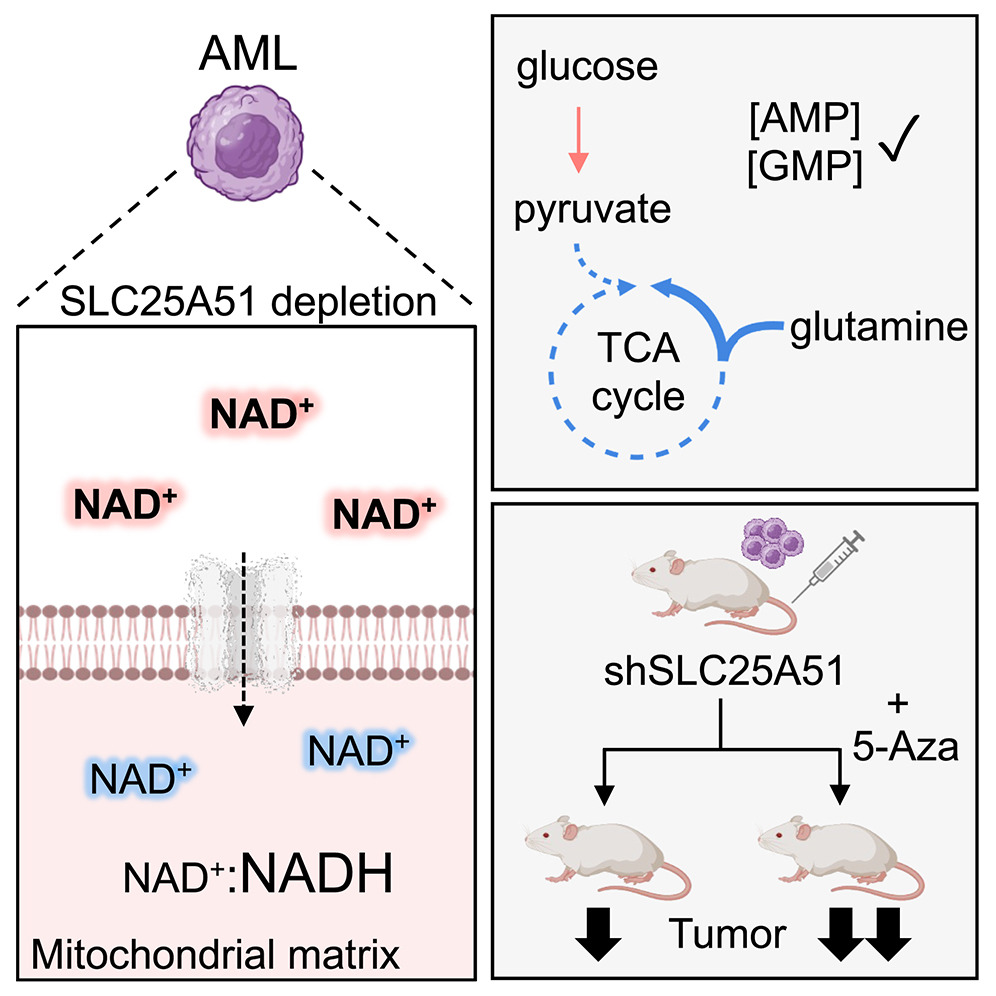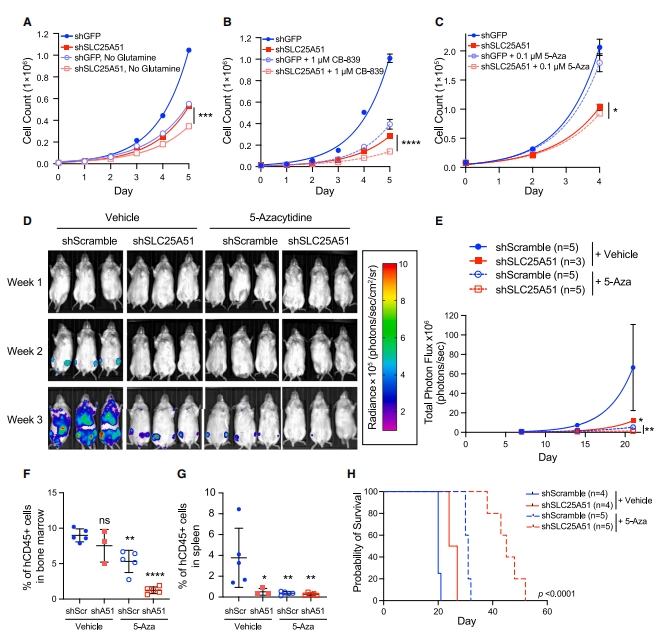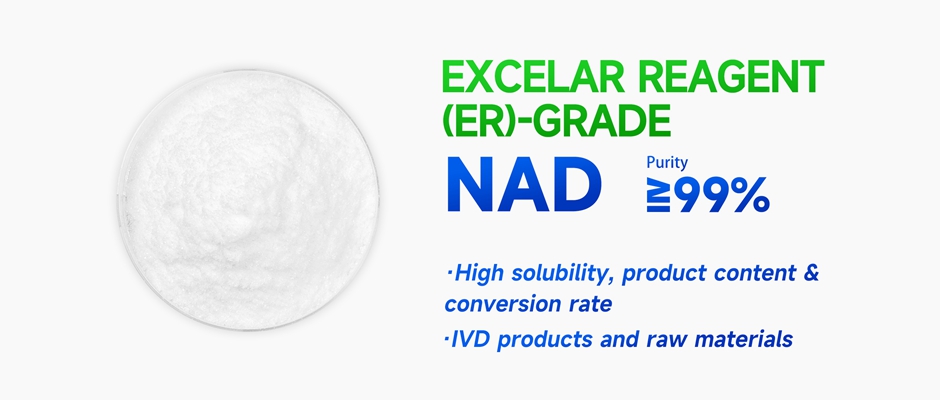
01 Jan
SLC25A51 Functions as an NAD+/NADH Redox Decoupler in AML

Introduction
Solute carrier family 25 member 51 (SLC25A51) is perceived as a mammalian transporter, which is capable of importing oxidized nicotinamide adenine dinucleotide (NAD+) into mitochondrial matrix. Remarkably, upregulation of SLC25A51 has correlation with poorer outcomes in patients with acute myeloid leukemia (AML), a clinically aggressive haematological disease with a mortality rate of over 70% within the first 5 years following an initial diagnosis.
The association between NAD+/NADH ratio and SLC25A51 in AML cells
Both NAD+ (oxidative form) and NADH (reduced form) are essential coenzymes for cellular energy metabolism, and the ratio of NAD+/NADH reflects the metabolic activity and health state, which has a direct impact on cellular rhythms, senescence, carcinogenesis and death. Importing mitochondrial NAD+ by SLC25A51 could be a critical aspect supporting mitochondrial metabolism in AML tumorigenesis. Concretely, the decreased mitochondrial NAD+/NADH ratio and specific loss of reduced ubiquinol are observed post the depletion of SLC25A51 in AML cells U937.
SLC25A51 as an NAD+/NADH redox decoupler in AML
SLC25A51 functions as an NAD+/NADH redox decoupler in AML tumorigenesis to sustain an oxidative TCA cycle and promote glutaminolysis. Depletion of SLC25A51 results in increased usage of non-glutamine carbon sources to support the TCA cycle, as determined by increased proportions of unlabeled TCA intermediates. SLC25A51 is required for robust glutaminolysis. In the context of SLC25A51 depletion, AML cells are forced to rely more on glutamine for aspartate synthesis.


Alleviation of AML by SLC25A51 depletion and 5-azacytidine
Loss of SLC25A51 leads to a subcellular redistribution of NAD+ in AML cells to limit proliferation. The combination of SLC25A51 depletion and 5-azacytidine is much effective in repressing the viability of AML cells and prolonging the survival time of mice.


Conclusion
SLC25A51 can maintain mitochondrial oxidative phosphorylation and boost the proliferation of AML cells by regulating NAD+/NADH ratio in mitochondria, with promising efficacy in treating AML, especially in combination with 5-azacytidine.
BONTAC NAD
BONTAC has been dedicated to the R&D, manufacture and sale of raw materials for coenzyme and natural products since 2012, with self-owned factories, over 170 global patents as well as strong R&D team consisting of Doctors and Masters. BONTAC has rich R&D experience and advanced technology in the biosynthesis of NAD and its precursors (eg. NMN and NR), with various forms to be selected (eg. endoxin-free IVD-grade NAD, Na-free or Na-containing NAD; NR-CL or NR-Malate). High quality and stable supply of products can be better ensured here with the exclusive Bonpure seven-step purification technology and Bonzyme Whole-enzymatic method.


Disclaimer
This article is based on the reference in the academic journal. The relevant information is provided for sharing and learning purposes only, and does not represent any medical advice purposes. If there is any infringement, please contact the author for deletion. The views expressed in this article do not represent the position of BONTAC.
Under no circumstances will BONTAC be held responsible or liable in any way for any claims, damages, losses, expenses, costs or liabilities whatsoever (including, without limitation, any direct or indirect damages for loss of profits, business interruption or loss of information) resulting or arising directly or indirectly from your reliance on the information and material on this website.
Under no circumstances will BONTAC be held responsible or liable in any way for any claims, damages, losses, expenses, costs or liabilities whatsoever (including, without limitation, any direct or indirect damages for loss of profits, business interruption or loss of information) resulting or arising directly or indirectly from your reliance on the information and material on this website.
